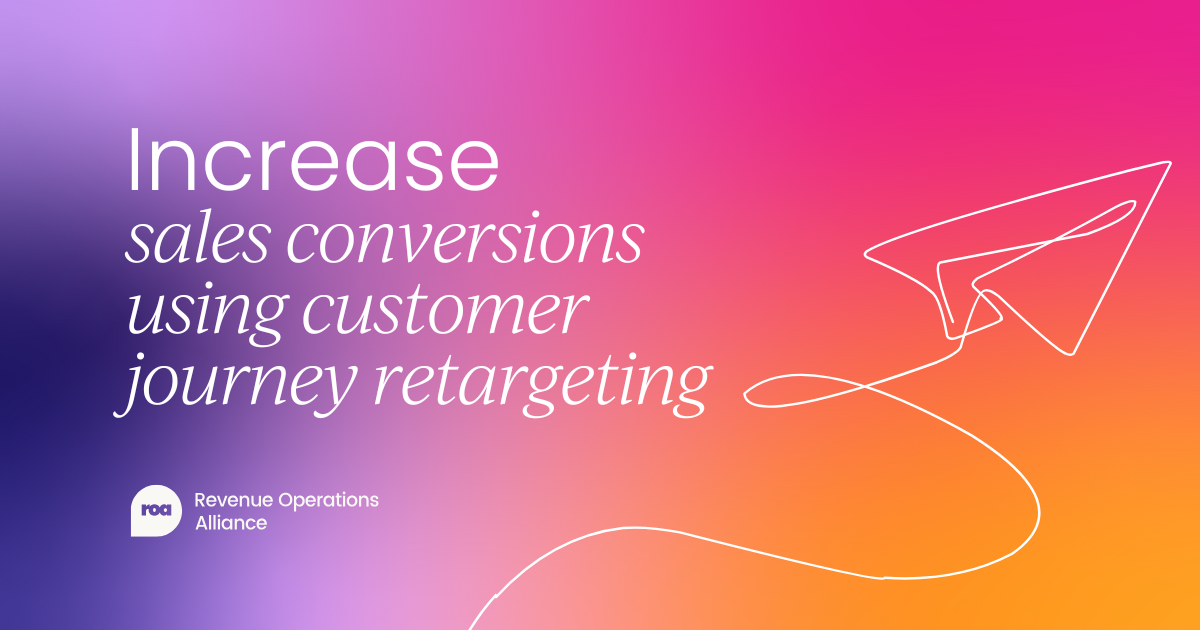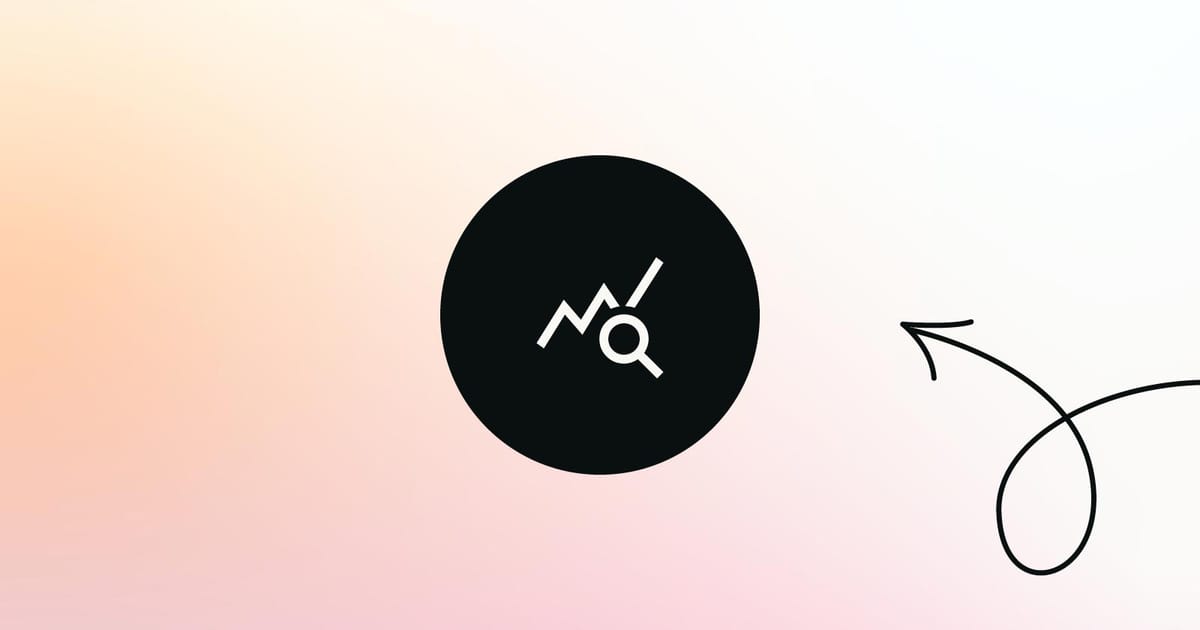A revenue operations professional has visibility over the entire customer journey – but how do you ensure this journey is working as intended?
With customer journey testing you can assess and pinpoint blockers within your buyer cycle and improve your customers’ experience with your organization.
This article covers:
- What customer journey testing is
- The benefits of testing
- Methods of customer journey testing
- How to test the customer journey
- Best practices of customer journey testing
- Challenges of customer journey testing
What is customer journey testing?
Customer journey testing is the process of evaluating your customer’s experiences throughout all their interactions with your company, from the initial interaction to final outcome.
These tests go beyond simple usability testing, and dive deeper into the emotions, motivations, and pain points associated with the buyer journey.
From this test, your organization will gain a greater understanding of your customer base, where they get stuck along their journey, and how you can optimize your customer experience (CX).

Benefits of customer journey testing
That’s all well and good, but why should you care about customer journey testing? Here are some key benefits of regularly testing your buyer’s journey.
Detailed understanding of the customer journey
Customer journey testing allows you to track each interaction your customers take during your sales cycle (and beyond), allowing your teams to understand your customers’ behaviors and preferences.
By collecting data about these user interactions, your team can use this information to take action.
Tailor personalized experiences
Through this understanding of your customers' behaviors, motivations, emotions, and preferences your organization can create more personalized experiences through the customer journey.
Whether that’s creating a targeted marketing campaign, tailoring your sales team’s messaging, or personalizing the customer onboarding process, your team will be equipped to improve your CX at every step.

Allows strategic decision-making
Customer journey testing unveils the hidden blockers in your customers’ path to purchase. Highlighting these challenges, allows your teams to correct the problem, and improve your CX with data to back them up.
Creates a competitive advantage
CX is more and more important in today’s marketplace. 73% of consumers report customer experience as an important factor in their purchasing decisions – that’s right behind factors like price and product quality.
By optimizing your customer journey with testing, you can stay one step ahead of your competition and satisfy your customers in the process.

Craft a consistent customer journey
There’s no point in an optimized customer journey if it’s inconsistent.
Your customers expect a certain standard when interacting with your company, and if one interaction regularly differs from another, they’ll get disheartened or confused.
Keeping your messaging, pricing, customer support, and other touchpoints consistent is the key to happy customers and increased conversions. Testing can help you find these inconsistencies so your team can iron them out.
Reduces churn
Customer journey testing goes beyond the point of purchase — your customer success team can also track interactions your customers have within your digital product or service.
If customers frequently get stuck in one area of their onboarding process (and subsequently churn), your team can investigate this, solve the problem, and reduce your customer churn rate.
Methods of customer journey testing
There are a number of ways to test out your customer journey. These have different purposes, so it’s best to select the test that best fits your objectives (more on this later).
For now, here are some types of tests you could run:
- Persona-based: Focuses on testing a specific customer group’s needs and behaviors. This is effective when you need to learn more about a particular customer segment.
- Scenario-based: Tests how buyers interact with a specific element of your customer journey. If you’re aware of an issue in an area, but not sure exactly what the issue is, this test can help you find the problem.
- Exploratory: Testers freely go through your customer journey to discover defects or pain points, this can find use cases your product team didn’t think of and uncover unforeseen problems.
- Customer feedback analysis: Uses reviews, surveys, and customer support data to understand key trends in customer experience and sentiment.
- A/B testing: Run A/B tests to see which versions of a landing page, email, onboarding sequence, etc. your customers prefer. These can be ongoing, as customers’ needs change regularly.
- Functional testing: Validate customer-facing features to ensure they’re working as intended.
- Non-functional testing: Test the useability, performance, and responsiveness of your website and product.

7 steps to test the customer journey
Without any further ado, let’s break down the seven steps you’ll need to get started with customer journey testing in your organization.
Define buyer persona
The first step is to define your buyer persona. You don’t want to know what your customers’ family, friends, or colleagues think of your user experience, you want to know what your customers think.
This means defining exactly who your customers are, and why they need your product, this allows you to narrow down your pool of testers and focus on a (mostly) uniform group of customers and their behaviors.
It’s likely your organization already has defined buyer personas, so it’s okay to use those as long as it’s detailed enough. You may even prefer to test one persona’s journey at a time to ensure more accurate results.
Map customer journey
Once you know whose journey you’re testing, you can start to roughly map your customer journey, as you know it.
Think about which touchpoints your customers are likely to come into contact with across their customer journey, and when within their journey this might happen.
Some touchpoints to consider include: blog posts, social media posts, whitepapers, emails, demos, sales calls, customer services, and onboarding sequences.
Involve key stakeholders across marketing, sales, customer success, and RevOps to gather a full picture of this process.
Once you understand how your customer journey should operate, you can test how it’s performing.

Select objectives and KPIs
Next, you should define the objectives and scope of your test. It’s near-impossible to test all aspects of your customer journey at once, so defining goals and parameters can help focus your efforts.
Your objectives should be specific and measurable, ideally your test findings will inform changes and improvements to your customer journey.
It’s also important to define your KPIs for the project at this stage, as this’ll allow you to track your progress more effectively.
Some metrics to consider tracking include:
- Conversion rate
- Customer satisfaction score
- Net promoter score (NPS)
- Average order value
- Session duration
- Bounce rate
- Retention rate/churn rate
- Click-through rate (CTR)
Design your test
Now you’re ready to start designing your test. This involves deciding on the method that best matches your goals and developing your test scenario.
You may also need to recruit a pool of testers to take part in your research, these should be fairly diverse, while also fitting your buyer persona’s key characteristics. Asking your prospects, customers, and churned accounts to participate may also be useful to understand their experiences.
Alternatively, you can run tests using simulations instead, but these will only show bugs, not insights into user behavior, motivation, or feelings.
It’s also important to ensure you have the resources available to run your tests, for example, tracking tools or data analytics software.

Run the test
While running the test, it’s essential your testers understand their task, so you may wish to have team members available to answer questions or clarify the task.
The most important part, however, is collecting as much data as possible from your test. Ensure you gather qualitative and quantitative insights to provide your teams with a full understanding of your tester’s experience.
Analyze results
Once your test is complete, it’s time to take on the mammoth task of analyzing your data and breaking it down into actionable insights. This is a lengthy process, so here are some key steps:
- Clean your data – it’s crucial your data is tidied up and formatted before starting your analysis.
- Quantitative and qualitative analysis – Separate your numeral data and analyze it against key KPIs, then analyze your qualitative data by identifying trends and performing a sentiment analysis.
- Segment data – It may be easier to manage your data if you segment it into stages of the customer journey or specific personas (depending on how your test was run), so you can compare like with like.
- Visualize trends – A wall of data can be difficult to understand, try using charts and flow diagrams to make your findings more digestible.
- Refine your customer journey map – Compare your findings to your initial customer journey map, and make any changes. It’s also worth nothing down some key differences between your expectations vs reality to share across your organization
- Find problems and clarify next steps – Use diagnostic analysis to identify the root cause of blockers and challenges, and point out any next steps based on these insights.
Feedback findings and make changes
The final step is to feedback these findings to the relevant stakeholders. This may be sales, marketing, customer success, or even product teams. It’s important to discuss these insights and discuss the next steps for improvement.
Keep track of the progress of these changes to keep your teams accountable for their improvements. And don’t forget to continuously test your customer journey to keep up to date with customer needs.

Best practices of customer journey testing
To help you along the way, let’s discuss some best practices to keep in mind when testing your customer journey.
Clarify objectives, personas, and scope
We’ve mentioned this already but we’ll say it again: get specific about your goals, personas, and scope.
The more specific these are, the more you can narrow in your focus and get accurate test data in the area you need. If you make your study too large, you may miss key pain points, or worse have too few data points in each area to make any conclusions.
If there are a few areas you’d like to test, you can always run another round of testing for that area.
Use mixed methods
It’s so important to collect both quantitative and qualitative data wherever possible. Collecting both allows you to objectively look at the data points of where your customers go within your customer journey and dive deeper into their feelings through their written or verbal feedback.
In short: quantitative data gives you the data to find the problem, but qualitative provides insight into how to solve it.
Both are required for an effective customer journey test.

Cross-functional alignment
Optimizing your entire customer journey, from first contact to product usage, is a huge feat. And definitely shouldn’t be ventured alone.
Instead involving the entire GTM team (marketing, sales, customer success, and product teams) is recommended. With revenue operations (or your CRO) leading the drive, it’s key to regularly communicate with other teams to ensure they’re taking action.
In some organizations, it may make sense to create a cross-functional ‘tiger team’ to oversee the testing. This’ll increase collaboration and provide a natural spokesperson for each department involved.
Iterative testing
Your customers are constantly changing, so customer journey testing isn’t a one-and-done.
What worked last quarter, might not work anymore, so it’s essential to continue testing and iterate on your processes. You may find your solutions didn’t solve your customers’ problems, so you can reassess and try again.
Continuous testing is the backbone of continuous improvement and creating an exceptional CX.

Challenges of customer journey testing
This process isn’t without its challenges. Here are a few common blockers so you can be prepared to resolve them as they arise.
Biases and errors
Like any test or data analysis, it can be subject to biases and human error. Here are some examples and how to avoid these mistakes:
- Biased testers. Using employees, friends, and family, to test your journey only leads to biased results. So, it’s important to use a variety of testers who fit your ICP.
- Biased hypotheses/analysis. When testing, it’s important not to cling to your ideas too closely. It’s okay to have a theory, but it’s also okay for your theory to be wrong.
- Biased testing. Ensure your testing methods are unbiased and realistic, otherwise, you’ll waste your time getting the feedback you want to hear instead of the feedback you need to hear.
- Human error. People make mistakes, so when it comes to data entry and analysis make use of data tools and AI to reduce these mistakes.
Difficulty simulating journey
It can be difficult to accurately simulate real-world conditions for your tests. The Hawthorne effect means the mere fact that your testers have been asked to test, (and are being watched) may change their behavior.
There’s no getting away from this, but you can mitigate it by having your testers run their journey in their own environments, on their own devices, rather than in a lab or your office.
This can allow them to relax and act more like they usually would.
Managing improvements
A customer journey test is likely to highlight many ways to improve your overall CX, but your team only has so much time. Managing these actions and prioritizing them can become a challenge, especially if your teams are already working through a backlog.
Keeping a project board of actions with priorities and rough timescales can help get through the changes in a timely manner. But it’s also important to be flexible with these timescales as your teams have other priorities and responsibilities to manage.
Ensuring consistent experience
Creating a consistent experience is a key component of an excellent CX, but achieving that is no simple feat.
Consider and test each channel both in isolation and in relation to other channels. This allows you to account for channel-specific requirements as well as the transition and consistency along your customer journey.












